New Zealand’s flag, a symbol of distinction, eloquently captures the nation’s ethos, reflecting its rich cultural landscape and profound global positioning. This flag is not just a piece of fabric but a narrative woven from the country’s unique history, its relationship with the indigenous Maori culture, and its ties to the broader Pacific region.
Flag of New Zealand
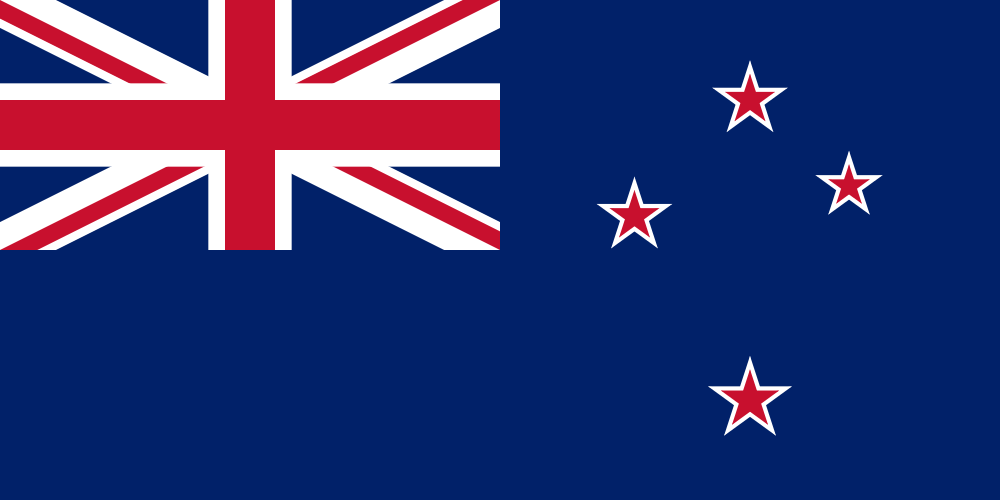
The flag encapsulates New Zealand’s enduring ties to the United Kingdom, featuring a deep blue background and the Union Jack.
To the right, the Southern Cross constellation is depicted with four red stars edged in white, symbolizing New Zealand’s location in the Southern Hemisphere and its identity as a sovereign nation within the Pacific.
This design is instantly recognizable and holds a place of significance nationally and internationally, reflecting New Zealand’s past and contemporary status on the global stage.
Flag of New Zealand: Color Palette
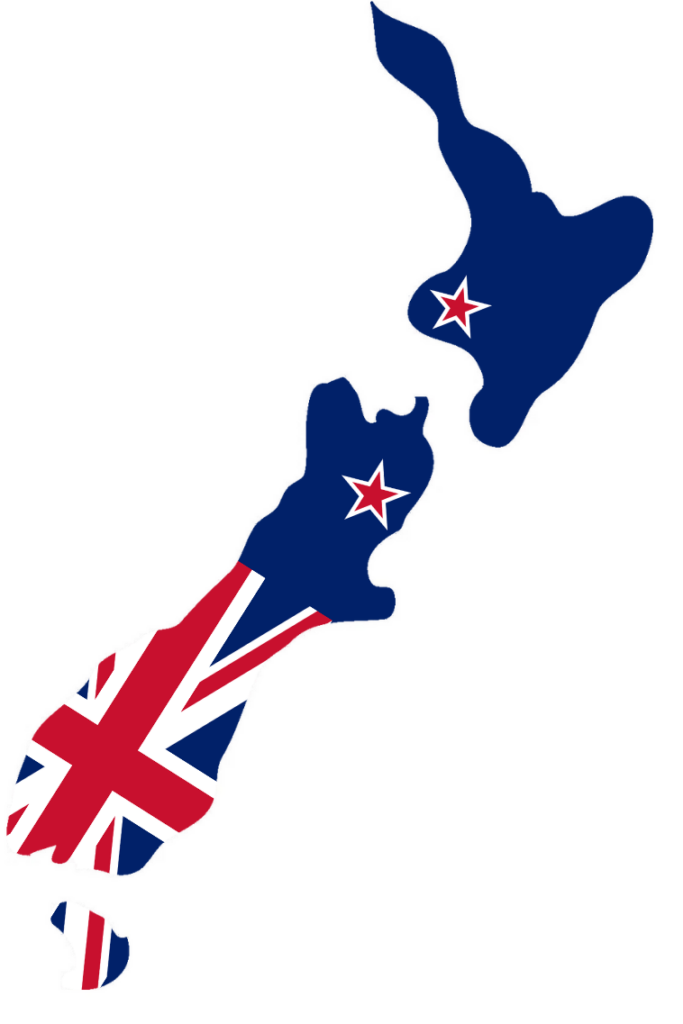
New Zealand Flag Emoji: 🇳🇿
New Zealand’s flag boasts a striking and meaningful palette, blending deep blue, red, and white to symbolize the nation’s essence. Each hue is carefully chosen to reflect key aspects of the nation and its heritage. Combining these colors gives the flag its distinctive appearance and carries rich symbolism, which will be explored in the following segment.
Meaning of Each Color
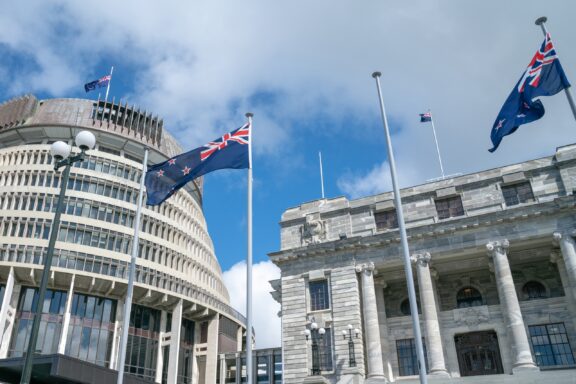
Blue
The royal blue background of New Zealand’s flag represents the sea and sky. This color choice underscores the nation’s island status and profound maritime connections. H
Historically, the blue also derives from the ensign of the Blue Squadron of the Royal Navy, emphasizing New Zealand’s past and the ongoing relationship with the United Kingdom.
Red
Red, found in the Union Jack and outlining the stars, represents the enduring ties between New Zealand and Britain. This color acknowledges New Zealand’s colonial heritage and reflects the country’s growth and development from these roots.
Additionally, red often conveys strength and resilience, attributes that New Zealanders identify with, especially considering their journey from a British colony to a sovereign nation.
White
White, used for the stars of the Southern Cross, stands for peace and honesty. These values are deeply ingrained in New Zealand’s national character.
The Southern Cross is a crucial element in the flag, representing New Zealand’s South Pacific location as part of the Southern Hemisphere. The stars are a navigational feature in the Southern Hemisphere sky, symbolizing guidance and direction, aligning with the country’s forward-looking nature.
Coat of Arms of New Zealand
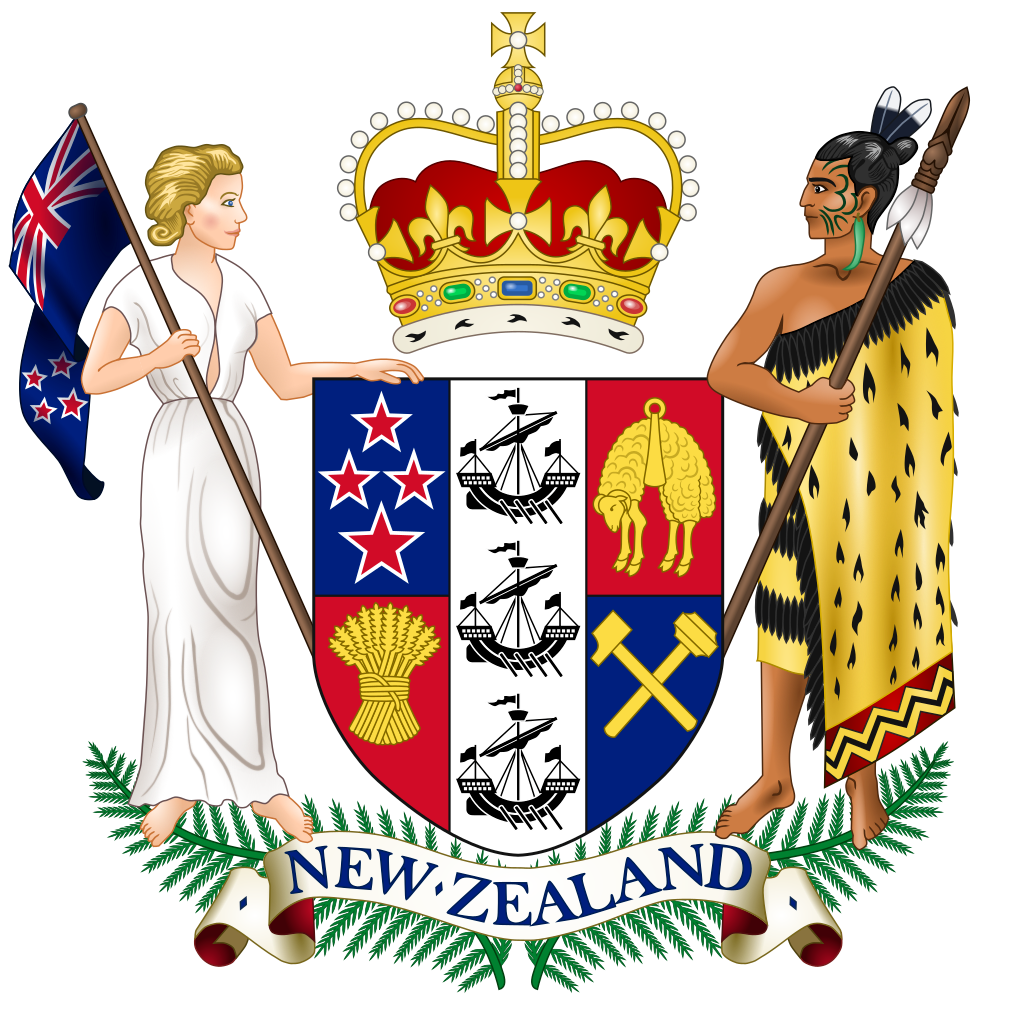
The Coat of Arms of New Zealand, distinct from the flag, represents the country’s authority and government. It includes various elements that symbolize the cultural and natural heritage of New Zealand:
- Shield: The central part of the Coat of Arms features four elements – three ships symbolizing the sea and New Zealand’s history of exploration and migration; wheat, representing agriculture; a fleece, symbolizing the farming industry; and mining hammers, representing the mining sector.
- Supporters: On either side of the shield are a European woman holding the New Zealand flag and a Maori warrior holding a Taiaha (a traditional Maori weapon). This juxtaposition represents the nation’s bicultural foundation, acknowledging its indigenous Maori heritage and European influences.
- Crest: Above the shield is a crown that embodies New Zealand’s constitutional monarchy and a lamb suspended from a ribbon representing New Zealand’s pastoral economy and agricultural heritage.
- Motto: The motto “Onward” at the bottom of the Coat of Arms reflects New Zealand’s aspiration for progress and development, looking towards the future with optimism and determination.
These symbols in the Coat of Arms comprehensively represent New Zealand’s cultural diversity, natural resources, and journey from a colony to a modern, multicultural society.
Historical Evolution and the Meaning Behind Changes
The evolution of New Zealand’s flag reflects the nation’s colonial past. Initially, the Flag of the United Tribes of New Zealand, adopted in 1834, was used, representing early efforts to establish a unique character. Post the colony’s formation in 1840, British ensigns predominated, signifying colonial ties.
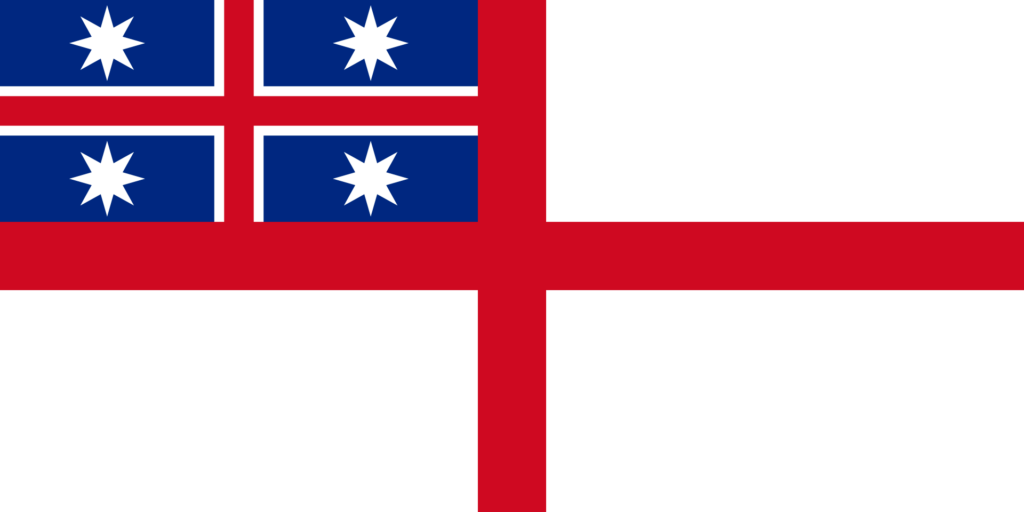
The current flag, introduced in 1869 for maritime use and formally adopted in 1902, merged colonial and regional identities. It incorporated the Union Jack, acknowledging the British colonial past, and the Southern Cross constellation, representing New Zealand’s geographical position.
The colors, while symbolic, have been consistently maintained throughout the flag’s origins, with their specific meanings discussed elsewhere.
In recent times, debates over changing the flag to better reflect New Zealand’s independence led to a 2016 referendum. However, the public vote favored retaining the existing flag, indicating a preference for its historical and traditional symbolism.
Overall Symbolic Meaning of the Flag
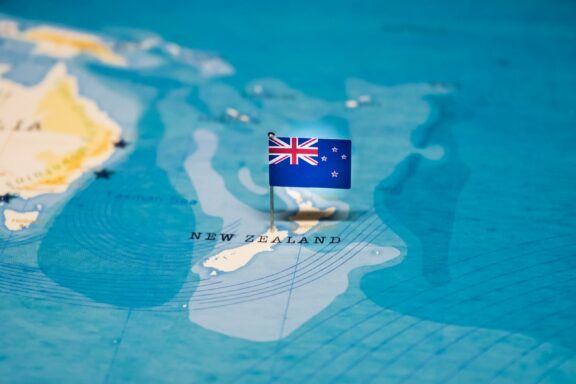
This emblem profoundly expresses New Zealand’s evolving spirit, highlighting its unique position in the world’s narrative. It harmoniously combines symbols of its British colonial heritage with elements that narrate the country’s progression from being a British colony to a proud, independent nation, celebrating its rich cultural diversity and significant role in the Pacific.
Similar Flags to the Flag of New Zealand
The New Zealand flag shares similarities with several other flags, each due to unique historical or geographical connections:
Australia
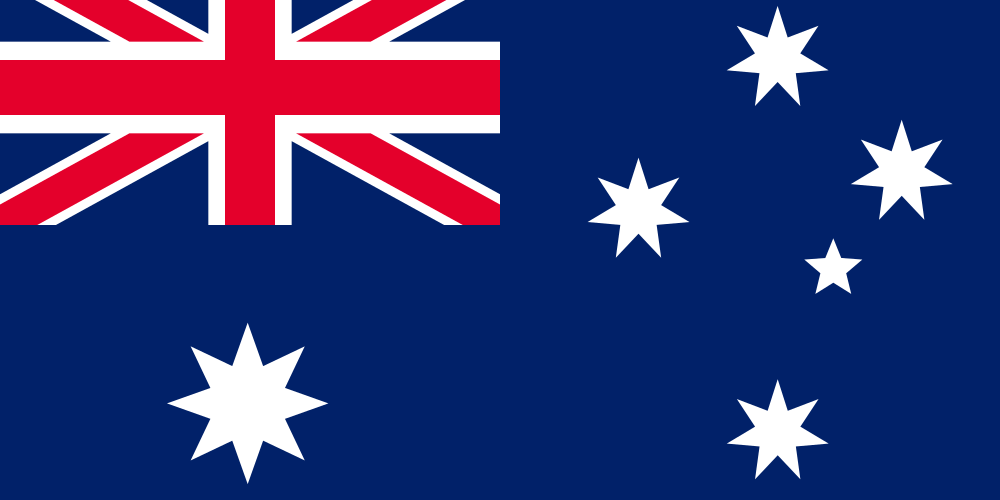
The Australian flag’s resemblance to New Zealand’s is one of the most notable. Both countries have a shared heritage as former British colonies, reflected in the incorporation of the Union Jack in their flags.
Additionally, the Southern Cross constellation on both flags also represents their global positioning and historical narrative within the Southern Hemisphere.
Fiji
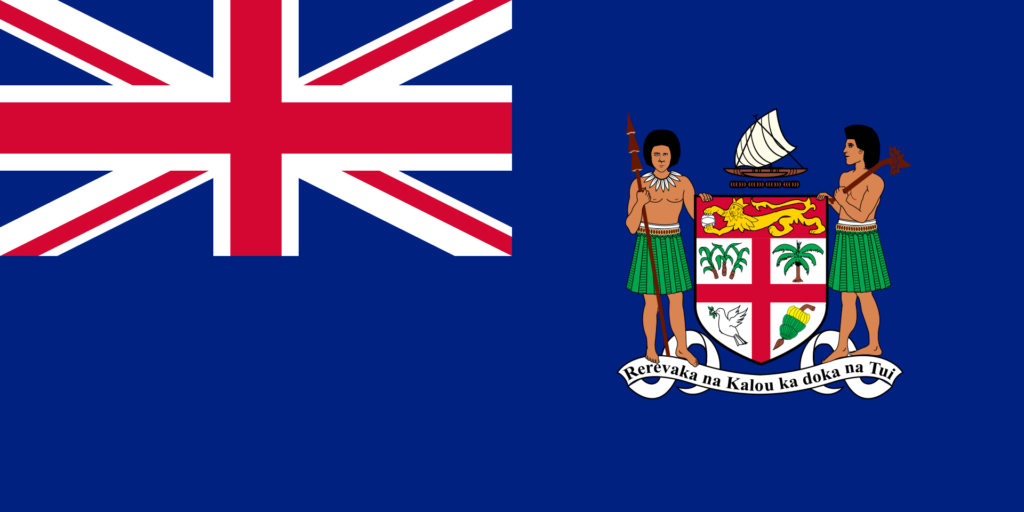
The flag of Fiji also bears a resemblance to New Zealand’s flag, primarily due to Fiji’s historical status as a British colony. The presence of the Union Jack in the corner of Fiji’s flag signifies this colonial past.
However, Fiji’s flag also incorporates elements unique to its culture and identity, distinguishing it from New Zealand’s while maintaining a common colonial thread.
Cook Islands
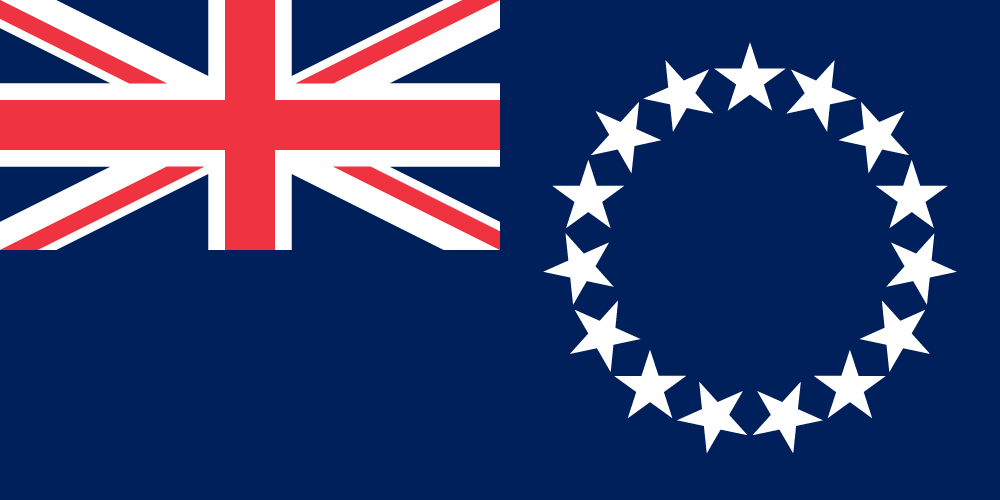
In political association with New Zealand, the Cook Islands have a flag that echoes elements of the New Zealand flag. The usage of the Union Jack indicates the Cook Islands’ connection to New Zealand and their shared history as part of the British Empire.
Final Thoughts
With its distinctive design and colors, the New Zealand flag stands as a symbol of the nation’s unique identity and history, resonating deeply with its citizens.
Its representation on the global stage emphasizes New Zealand’s distinctiveness within the international community and its pride in a rich cultural heritage and national journey.
Image Sources and Copyright Information
- New Zealand Flags Flying in Front of Government Buildings in Wellington: © Photos BrianScantlebury/Shutterstock
- New Zealand Flag on Map: © hyotographics/Shutterstock